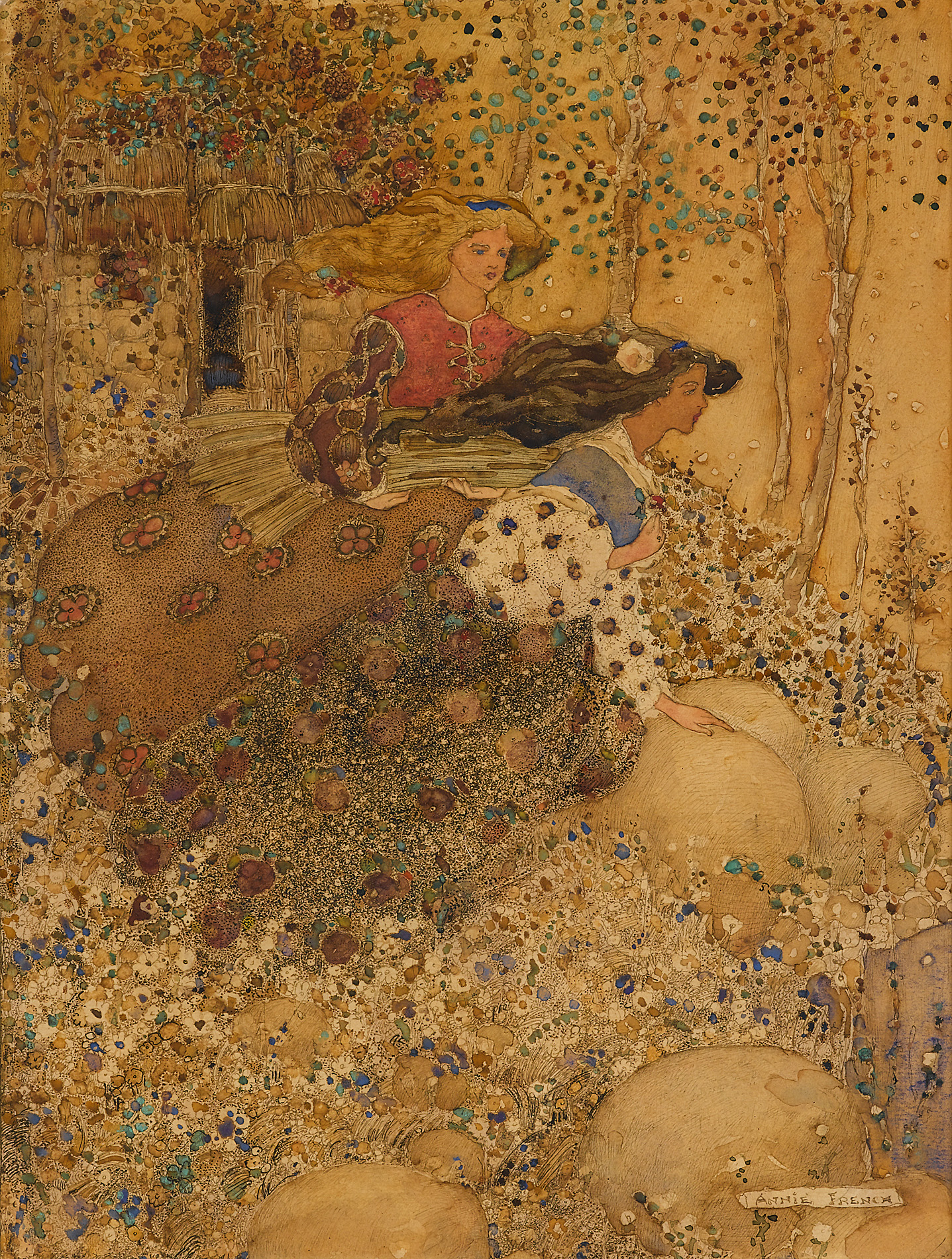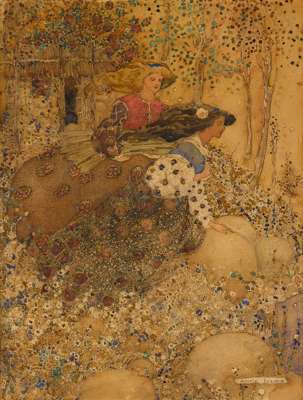
Lot 2

ANNIE FRENCH (SCOTTISH 1872-1965) ‡§
‘O BESSIE BELL AND MARY GRAY’


Auction: 7 September 2012 at 15:00 BST
Description
signed lower right ANNIE FRENCH, ink, watercolour, gold ink and traces of pencil on paper
Dimensions
30 x 23cm (12 x 9in)
Footnote
Provenance:
The Fine Art Society, London
Sotheby's, Perthshire, 'Scottish and Sporting Paintings', 29th August 1988, Lot 836
Exhibited:
The Royal Glasgow Institute, 1910, no. 395
Note:
The subject, taken from The Child Ballads, tells the tale of two friends who take refuge from the plague in a bower, but who later die after being infected during a visit from a suitor.
Born and raised in Glasgow, Annie French was encouraged by her father to pursue her artistic ambitions, enrolling in the Glasgow School of Art in her early twenties. There, following the example of Jessie M. King, French developed her talent for line drawing, similarly preferring 'romantic' and 'fanciful' subjects. [1] She was one of many artists of this period who borrowed some of the conventions of the Pre-Raphaelites and seldom departed from the theme of delicately pretty ladies among flowers or woods, which is reflected in the six works offered for sale. As can be seen in 'Autumn and The Rose', flowers play an important part in her designs, and are often the basis for her paintings highly patterned and decorative style. While small scale watercolours formed the mainstay of her work, French also produced book illustrations, such as 'Girl Smelling Roses', as well as designs for postcards and greeting cards. It has been suggested that 'The Plumed Hat' was such a design. [2]
French's work first appeared publicly in the Brussels Salon of 1903, while she was still a student, and was accepted thereafter in exhibitions at the Royal Glasgow Institute of the Fine Arts and the Royal Scottish Academy. [3] Comparisons of her work with that of Aubrey Beardsley are based on her use of dots and the dotted line but an article in 'The Studio' in 1906 noted a distinction between the two stating that, "from what might be termed the Beardsley convention [French forms] fanciful schemes of her own". [4] Praising her "individual charm" and "highly decorative quality and elegance of design" the publication helped to enhance her reputation. From 1906 French shared a studio in Glasgow with Bessie Innes Young and Jane Younger and, three years later, became Tutor in Ceramic Decoration at Glasgow School of Art as successor to King. Following her marriage to the artist George Woolliscroft Rhead in 1914 she settled in London and became a frequent exhibitor at the Royal Academy until the mid-1920s. Her style and production remained constant throughout her life until her death in Jersey aged 93.
[1] Louise Annand, 'Annie French (1872-1965) in Glasgow Girls, p. 141
[2] Ibid , p. 142
[3] Ibid, p. 145.
[4] 'Studio Talk', The Studio, Vol. XXXVIII, 14th July, 1906, p. 164.


